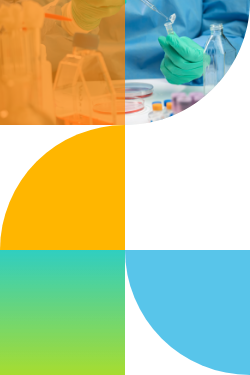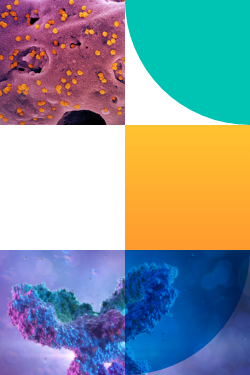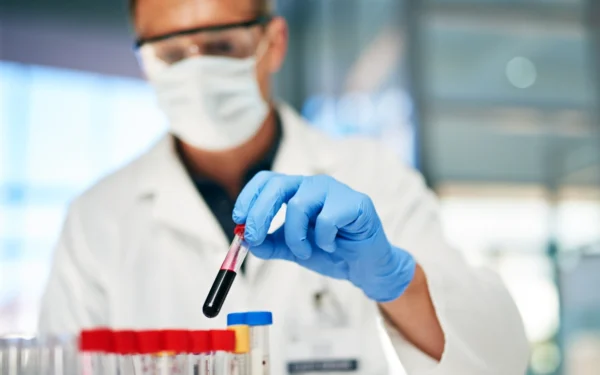In research labs across biotech and pharmaceutical organizations, thousands to millions of biochemical and biological entities are tracked across disparate databases, file formats, and legacy systems. These entities can include small molecules, plasmids, peptides, engineered cell lines, and other materials essential to advancing research and development (R&D) programs. Without centralized, structured management, the entity data becomes fragmented, leading to redundant entries, poor traceability, and time-consuming data retrieval. When scientists cannot quickly confirm an entity’s identity or usage history, critical experiments can be delayed or interrupted, ultimately slowing the pace of R&D.
The consequences of fragmented entity data extend beyond operational inefficiency. It complicates regulatory readiness, hampers internal collaboration, and limits your ability to leverage institutional knowledge effectively. Manually reconciling inconsistent or outdated records consumes valuable research time and introduces risks to data integrity. To address these challenges, forward-looking scientific organizations are turning to a unified model for entity management: the Single Source of Truth (SSOT).
The entity fragmentation challenge in multidisciplinary R&D
Today’s R&D organizations span multiple scientific disciplines, each with its own data models, systems, and vocabularies. While this decentralized structure may support the specific needs of chemistry, biology, pharmacology, or translational science teams, it often leads to a fragmented view of critical entities. Materials are tracked in isolated systems with inconsistent metadata and limited cross-functional visibility.
As a result, data silos emerge: compounds may be registered in one platform while proteins, constructs, or reagents are logged in spreadsheets or separate databases. Over time, this disconnect leads to duplicate entries, mismatched identifiers, and incomplete or conflicting records.
This disjointed system raises practical questions that often slow research progress:
- Is this the same molecule we synthesized last year, or a different batch?
- Has this plasmid already been validated in another program?
- Were these reagents handled under comparable conditions?
These problems are also exacerbated by legacy systems lacking robust version control or lineage tracking, especially when the same entity appears under different names, with inconsistent metadata, and across multiple platforms. In regulated environments, limited traceability complicates audit preparation and makes compliance more difficult to demonstrate. It also hinders knowledge transfer. Teams waste time revalidating reagents or retracing entity provenance simply because they can’t locate authoritative records, ultimately slowing down time to market and delaying the delivery of promising therapies to patients.
What Is a Single Source of Truth?
A Single Source of Truth (SSOT) is a centralized system for registering, defining, and tracking all the biochemical and biological entities used across an R&D environment. Think of it as the authoritative reference for scientists, systems, and collaborators across your organization.
Rather than storing data in siloed systems, the SSOT consolidates entity information into unified profiles. Each record is assigned a canonical name and may include synonyms, aliases, or registry identifiers to ensure backward compatibility with legacy systems. These profiles are enriched with structured metadata, such as molecular structures, sequence files, assay results, sourcing history, and regulatory attributes, and maintained under version control to maximize accuracy and integrity.
Implementing an SSOT in your research lab provides:
Cross-functional entity registration
A robust SSOT supports centralized registration of entities across domains like chemistry, biology, and informatics. It accommodates a wide range of materials, including small molecules, biologics, peptides, plasmids, and synthetic constructs. By consolidating these entities in one framework, the SSOT eliminates redundancies, resolves ambiguities, and allows teams to confidently reuse validated materials without risking data duplication or inconsistency.
Consistent identification and version tracking
Typically, each entity in an SSOT is assigned a canonical name along with any relevant synonyms, internal aliases, or historical identifiers. This reduces misinterpretation caused by inconsistent naming across teams or documentation. Version control ensures changes, such as reformulations or replacements, are recorded over time and remain traceable.
Lineage visibility
An SSOT maps the relationships between parent and derivative entities, allowing researchers to trace the evolution of each entity. This is particularly useful in complex workflows, for example, when a protein is modified to include an epitope tag or a lead compound is altered for improved activity. Visual lineage tracking supports reproducibility and informed experimental planning.
Context-rich metadata
Metadata fields within the SSOT can be configured to reflect scientific and operational needs. Whether you’re documenting chemical structures, biological sequences, sourcing history, storage conditions, or assay performance, the system ensures entities are described with meaningful, domain-specific attributes. This level of detail empowers cross-functional research teams to access the precise information needed to make more informed decisions and design better experiments.
Core capabilities of an entity management system
To serve as a reliable SSOT, an entity registration system must go beyond basic cataloging. It should offer a flexible, scalable architecture that accommodates diverse data types, scientific disciplines, and evolving workflows:
Flexible schema
A flexible schema allows teams to define custom metadata fields for each entity category, reflecting its unique characteristics. For example, plasmids may include sequence files, expression tags, and antibiotic resistance markers, while small molecules might require stereochemistry, salt forms, and formulation details. This configurability ensures that records are relevant, complete, and useful across collaborative functions.
Version control and lineage
As your lab’s scientific entities are modified through genetic engineering, chemical derivatization, or formulation changes, version control is essential for tracking how these entities evolve. Lineage tracking allows you to map relationships, for instance, between a parent compound and its derivatives or between an original plasmid and its cloned constructs. This preserves scientific context, supports reproducibility, and simplifies regulatory submissions. By linking all versions and derivations, biopharma registration solutions provide transparency across creation, usage, and refinement workflows.
Access controls and audit trails
An ideal SSOT enforces role-based permissions that govern who can view, modify, or register entities. Whether researchers update a sequence, modify metadata, or create a new derivative, every action should be logged with a timestamp, user ID, and contextual information. These controls help meet regulatory requirements and build trust in the integrity of the data.
Interoperability
Modern research labs rely on a network of interconnected systems, including electronic lab notebooks (ELNs), laboratory information management systems (LIMS), scientific data management systems (SDMS), and analytics platforms. An SSOT must integrate seamlessly with these systems through APIs and automated data pipelines to ensure data flows consistently across workflows, reducing manual input, improving data quality, and accelerating decision-making. For instance, automated reagent ordering, experiment planning, and data visualization can support a more connected and efficient research environment.
How can you implement a Single Source of Truth?
Establishing a Single Source of Truth (SSOT) requires a coordinated effort across scientific, informatics, and operational teams. Key steps include planning integrations, standardizing data, selecting the right platform, and managing organizational change.
- Assessment and planning: Begin by auditing current data sources, such as internal databases, spreadsheets, and external registries, to evaluate data quality, duplication risks, and integration challenges. Use this assessment to establish priorities for cleanup, consolidation, and migration. Ensure alignment between stakeholders, including chemists, biologists, informatics leads, and IT teams, particularly around naming conventions and metadata standards.
- Migration and standardization: Define clear mapping rules and validation protocols to guide data consolidation. To avoid inconsistencies, resolve redundant records before migrating. After data import, implement quality control checkpoints to verify accuracy and integrity. Create rollback procedures in case errors are detected post-migration.
- Governance and adoption: Assign formal roles to data stewards and entity managers. Establish cross-functional governance committees to oversee policy enforcement, resolve exceptions, and maintain consistency. Develop and document standard operating procedures (SOPs) for entity registration, versioning, and metadata updates. To ensure adoption, invest in user training and change management initiatives.
- Technology selection: Choose a platform that supports scalability, system interoperability, audit-readiness, and ongoing vendor support. The system should meet current research needs while adapting to future scientific and regulatory demands.
Entity management as a foundation for scalable science
In today’s competitive biopharma landscape, establishing a Single Source of Truth (SSOT) is essential for achieving operational efficiency, regulatory preparedness, and sustained scientific innovation. A well-structured SSOT supports scalable entity management by standardizing data practices, improving traceability, and enhancing system-wide accessibility. By enabling seamless collaboration across research teams, you accelerate the progression of high-quality science from discovery through development and into clinical application.





